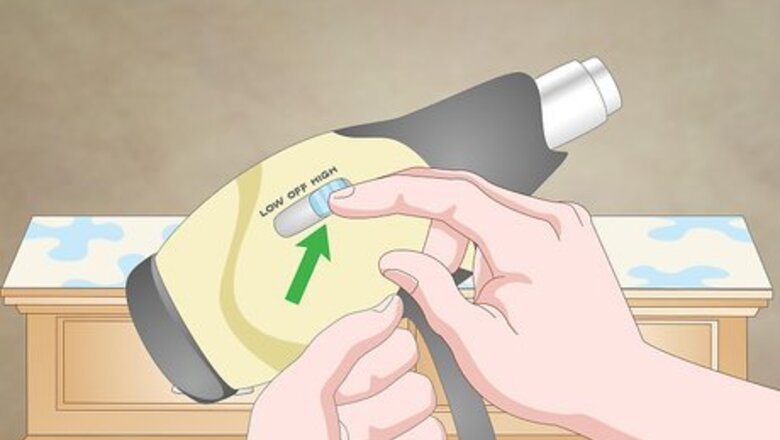
views
Using Heat on Wood, Metal, and Countertops
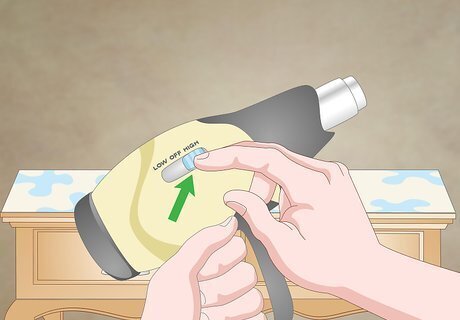
Get a hairdryer and turn it on to the highest setting. Your ordinary hairdryer isn’t just a styling tool! Plug your hairdryer into a power outlet, switch it on, and adjust the temperature. Make sure that the cord is long enough for you to reach all of the contact paper with the hairdryer. Adding heat is the easiest way to remove contact paper, as it melts the strong adhesive that holds the paper to the surface. Use an extension cord if the hairdryer can’t reach all of the contact paper easily.
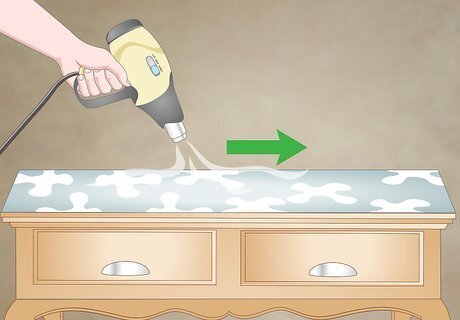
Move the hairdryer over the contact paper to warm the adhesive. Begin in a corner that's easy to reach and hold the hairdryer around 3 in (7.6 cm) away from the contact paper. Slowly move the hairdryer back and forth over the area, paying special attention to the corner or an edge that you will be able to peel the paper up from. Continue adding heat until you can see part of the contact paper beginning to lift up. It should only take a few minutes for the paper to start lifting up.
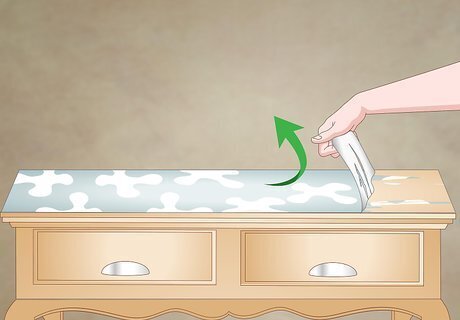
Peel off the contact paper from an edge or a corner. Look for where the contact paper has lifted the most. Use your fingernails to firmly grasp the contact paper and start slowly tugging it upwards to remove it. If you reach a tough part or if the paper breaks, simply apply more heat to break down the adhesive. Aim to remove as much contact paper as you can. In very stubborn cases, it can be helpful to use the hairdryer at the same time as peeling the contact paper away.
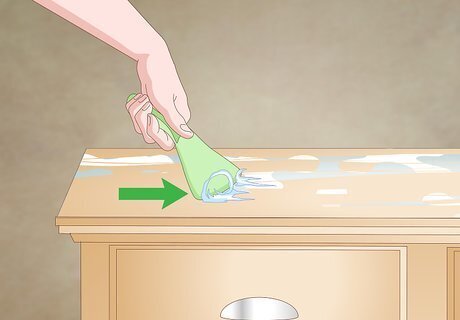
Use a plastic scraper to remove any remaining contact paper. Although heat is a very effective tool, there may be some particularly stubborn areas of contact paper. Continue using the hairdryer and use a plastic scraper to help lift up any difficult bits of paper. Once you have an edge starting to lift, you should be able to peel the contact paper up.

Apply adhesive remover with a sponge to lift any sticky residue. Pull on protective gloves and wet a sponge with adhesive remover. Use the sponge to scrub away at any adhesive residue that couldn’t be removed with heat. You can find a variety of adhesive removers at craft and home improvement stores. Read the label carefully before you begin to ensure that the product is safe for your surface. Alternatively, you can use rubbing alcohol instead of adhesive remover.
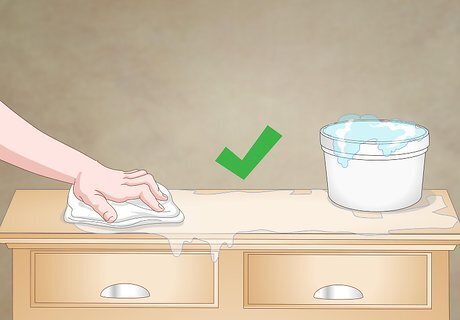
Clean the surface with warm, soapy water and then let it dry. Once all of the residue is gone, it’s time to get rid of any remaining adhesive remover! Fill a bucket with warm water and add a few drops of mild soap, such as dish detergent. Dip a cleaning cloth into the bucket and then wring out as much water as possible. Wipe down all of the areas where there was contact paper and then go over it again with a dry cloth to remove any excess water. Let the surface air-dry completely before you use it again.
Peeling and Scraping Contact Paper off Glass
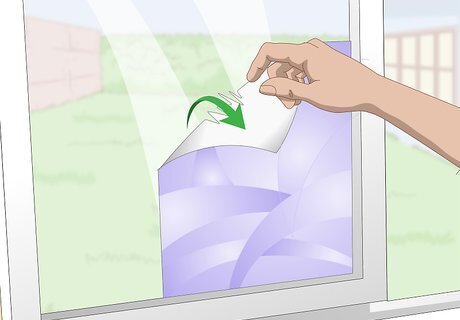
Peel off as much contact paper with your fingernails as possible. Look around the edges and corners of the contact paper for any parts that may have lifted up slightly. Grasp the edge or corner and slowly tug the contact paper upward to start peeling it from the glass. Don’t worry if the contact paper breaks or if it's stuck in some areas and just focus on getting rid of what you can. It's best not to use heat to remove contact paper from windows and other glass surfaces. This is because if there is a large temperature difference, the glass could break.
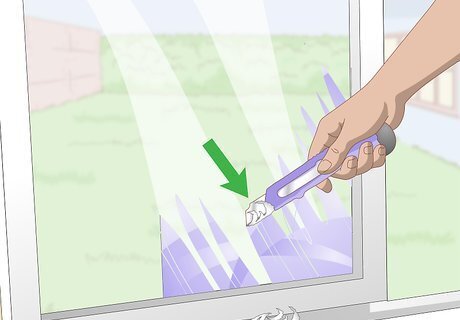
Use a single-edge razor blade to remove the rest of the contact paper. Attach a single-edge razor blade to a scraper and gently scrape around the edges of the remaining contact paper. When there is enough of the contact paper lifted to hold, use your fingernails to peel the contact paper away from the glass. You can find single-edge razor blades at home improvement and paint stores.

Use adhesive remover to remove the residue from the glass. Wear gloves and pour some adhesive remover onto a cleaning sponge. Rub the adhesive remover over the sticky residue and wait for 2-3 minutes to let it start working. Then use a clean cloth or the scraper again to easily wipe or scrape away the sticky residue. Choose an adhesive remover that’s designed for non-absorbent surfaces like glass. EXPERT TIP Claudia & Angelo Zimmermann Claudia & Angelo Zimmermann House Cleaning Professionals Claudia and Angelo Zimmermann are the founders of Everneat, an Eco-Friendly Cleaning Service based in New York City and in Connecticut. They are also the founders of Clean Code, a DIY 100% natural cleaning product line. Claudia & Angelo Zimmermann Claudia & Angelo Zimmermann House Cleaning Professionals Try using essential oils as an alternative to commercial adhesive remover. Essential oils are an effective and natural way to remove adhesive residue from non-painted surfaces such as metal, plastic, or glass.

Clean the glass with a damp microfiber cloth to make it clear and shiny. It’s likely that the glass won’t be looking its best after the contact paper! Get a microfiber cloth and dampen it very lightly with warm water. Wipe the glass with the cloth and then use a dry cloth to remove any excess water. Alternatively, you can use paper towels.












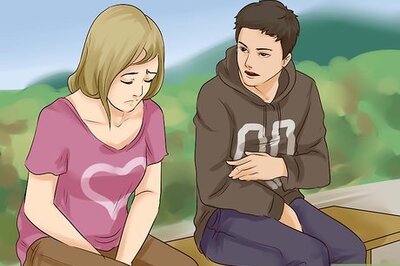




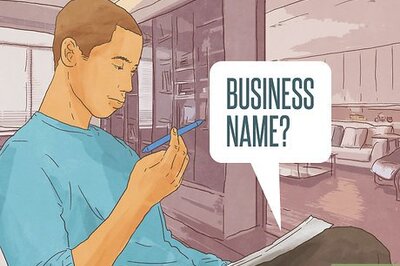

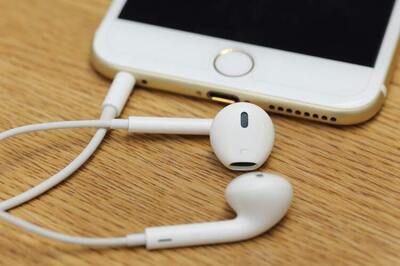
Comments
0 comment